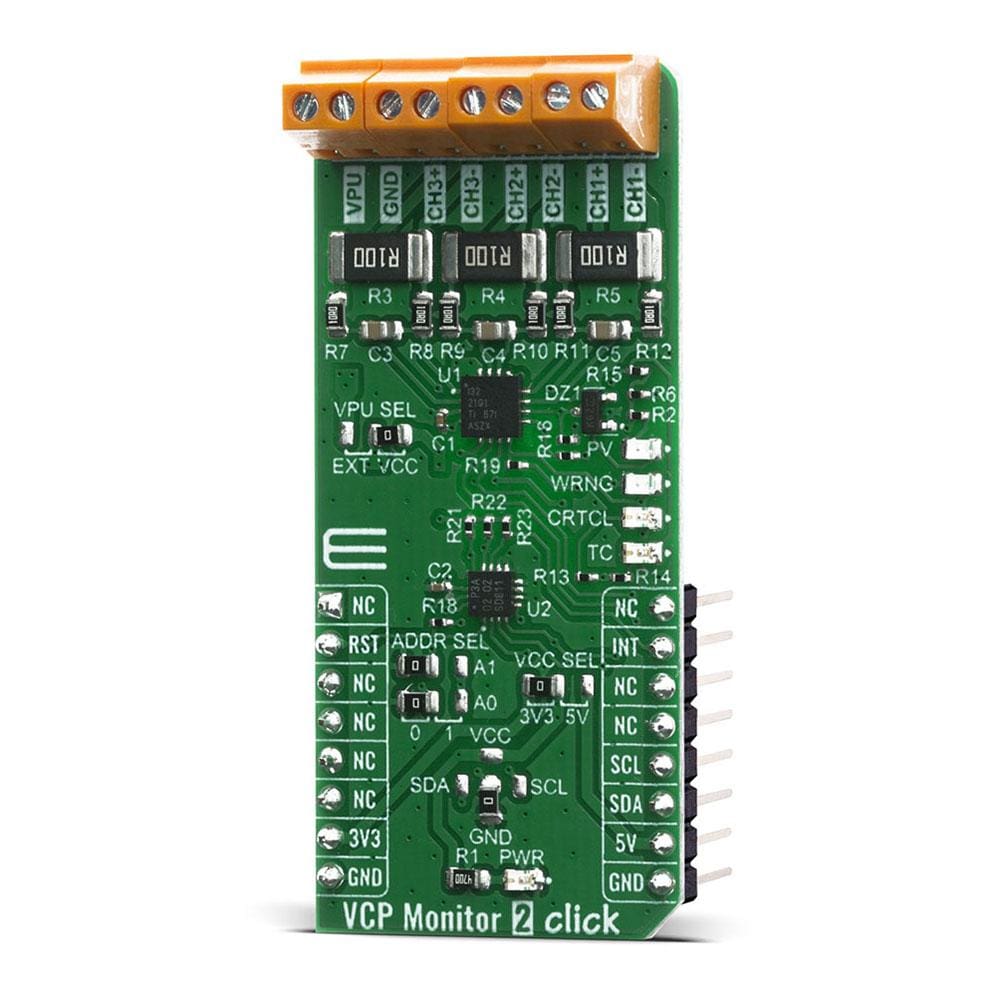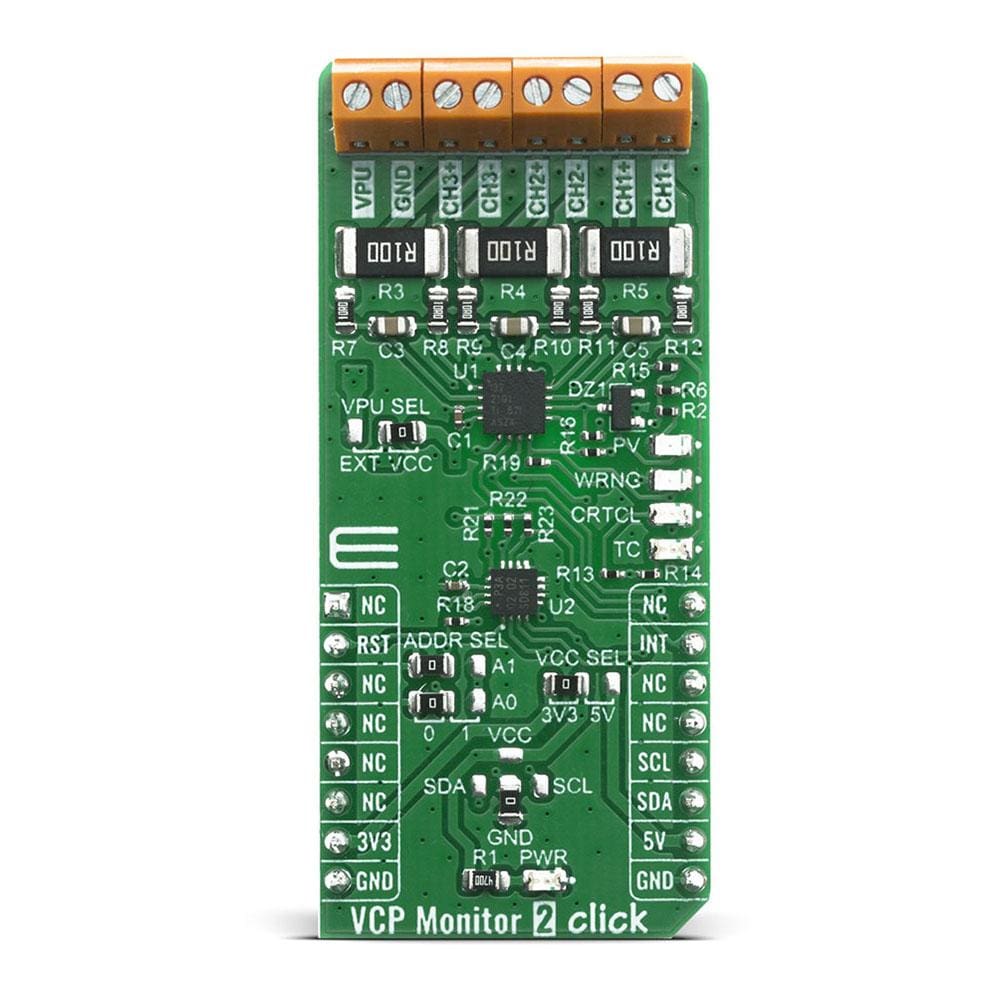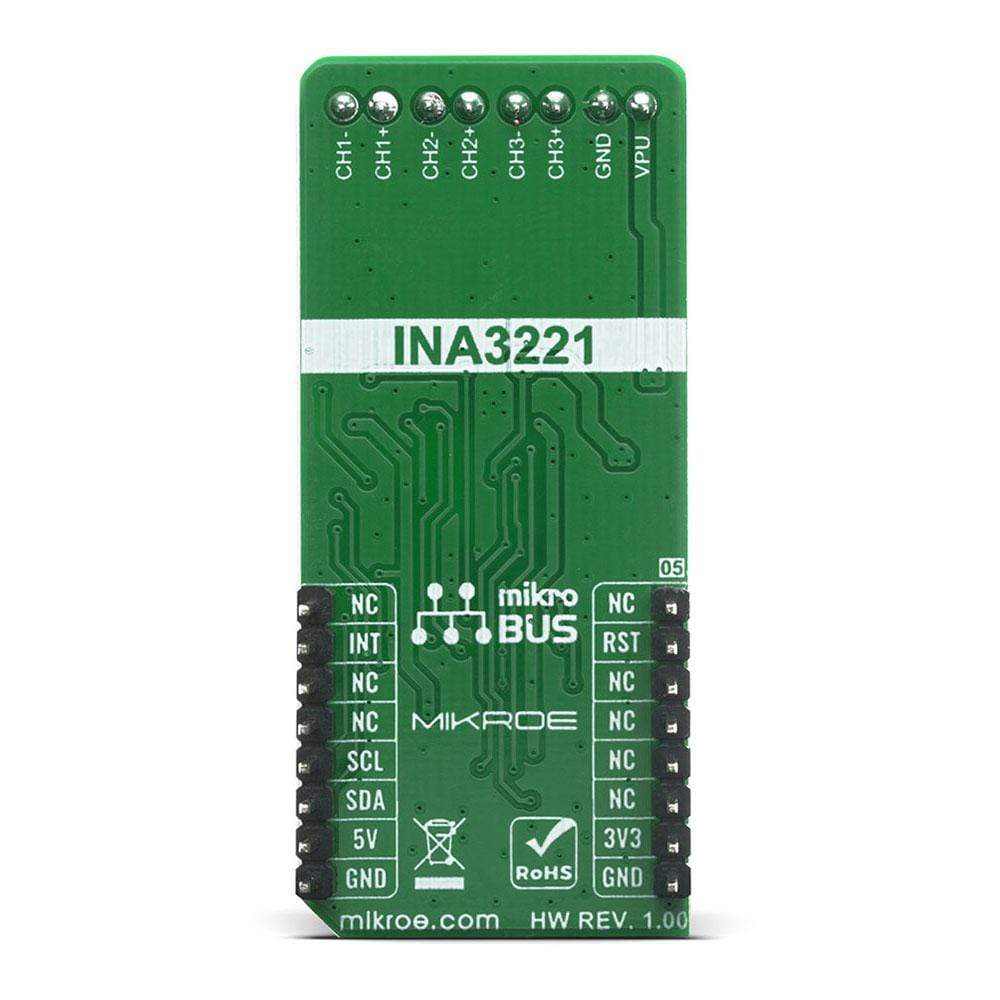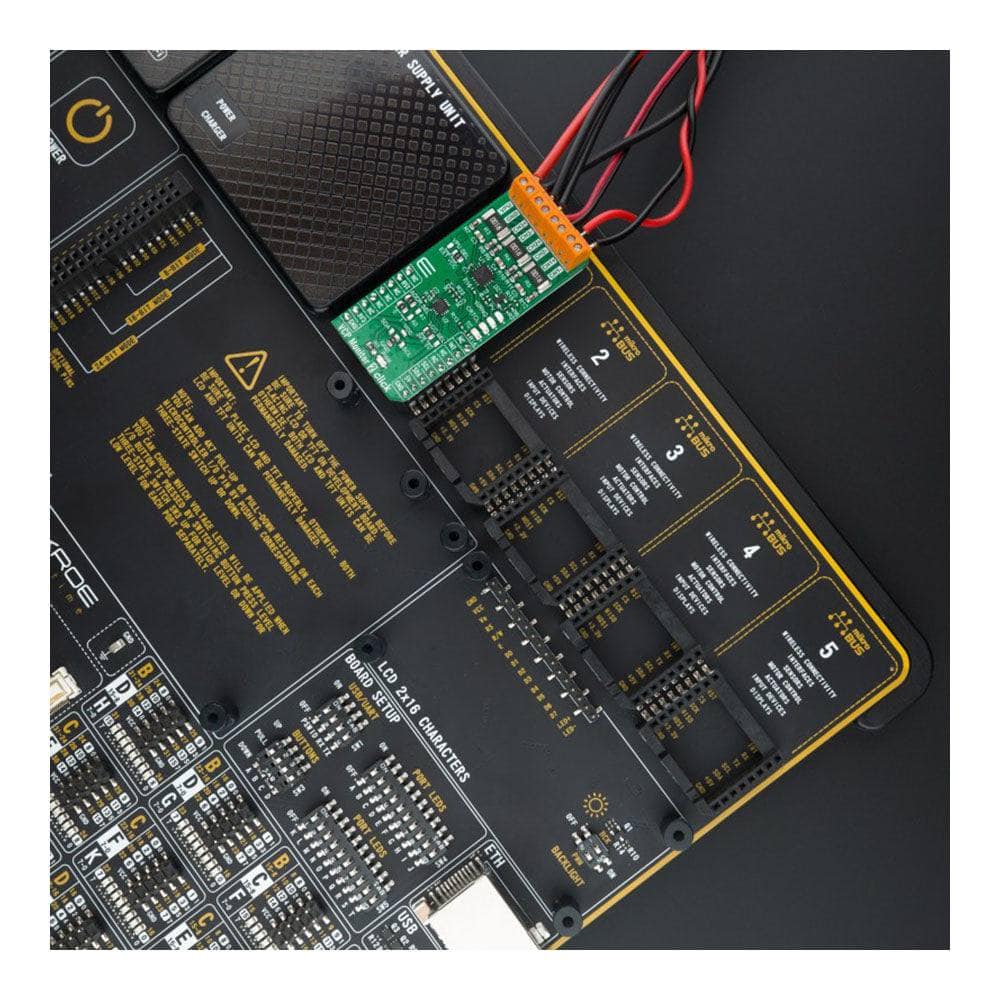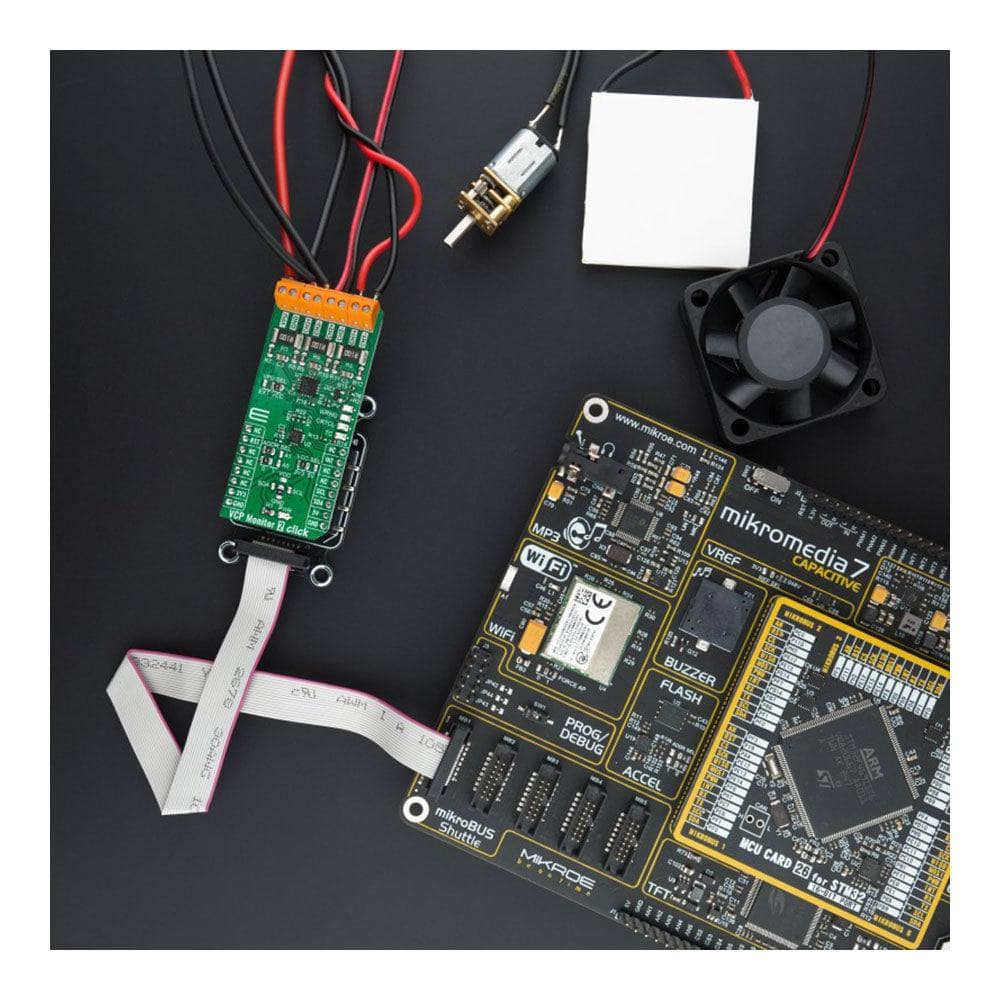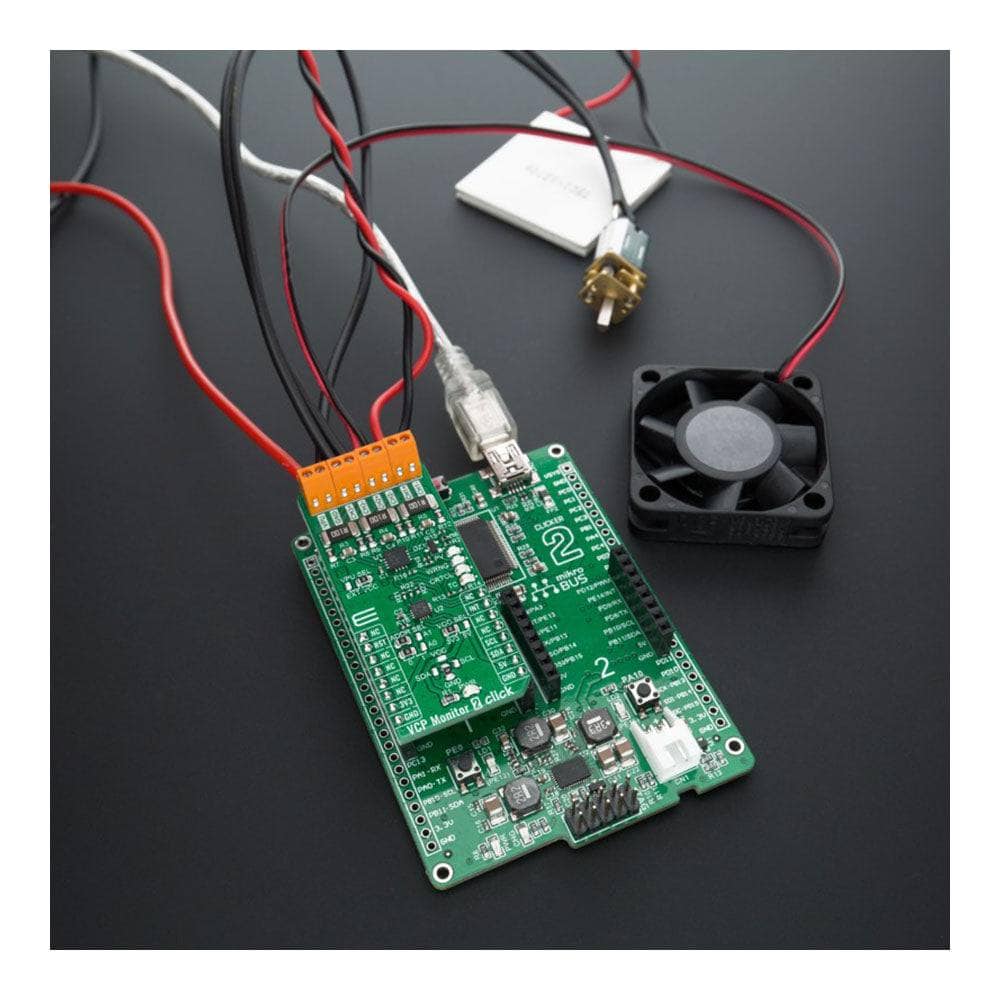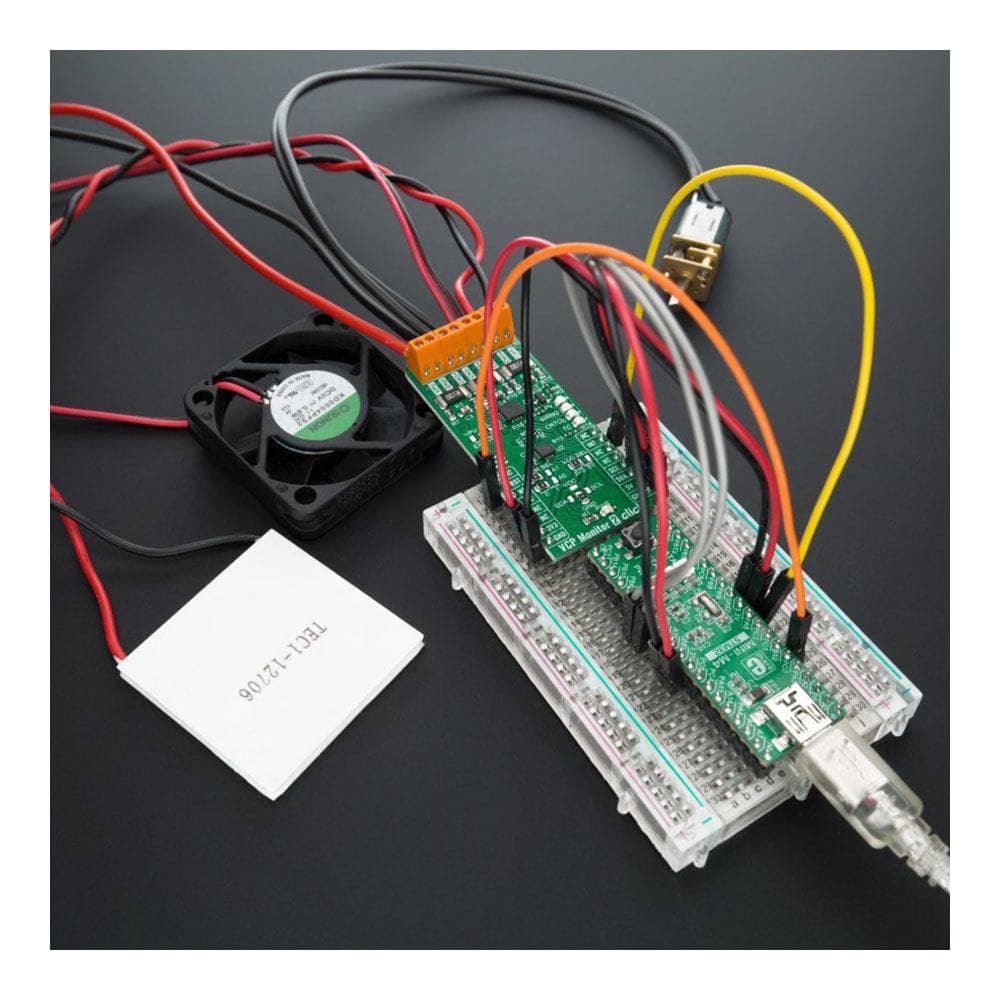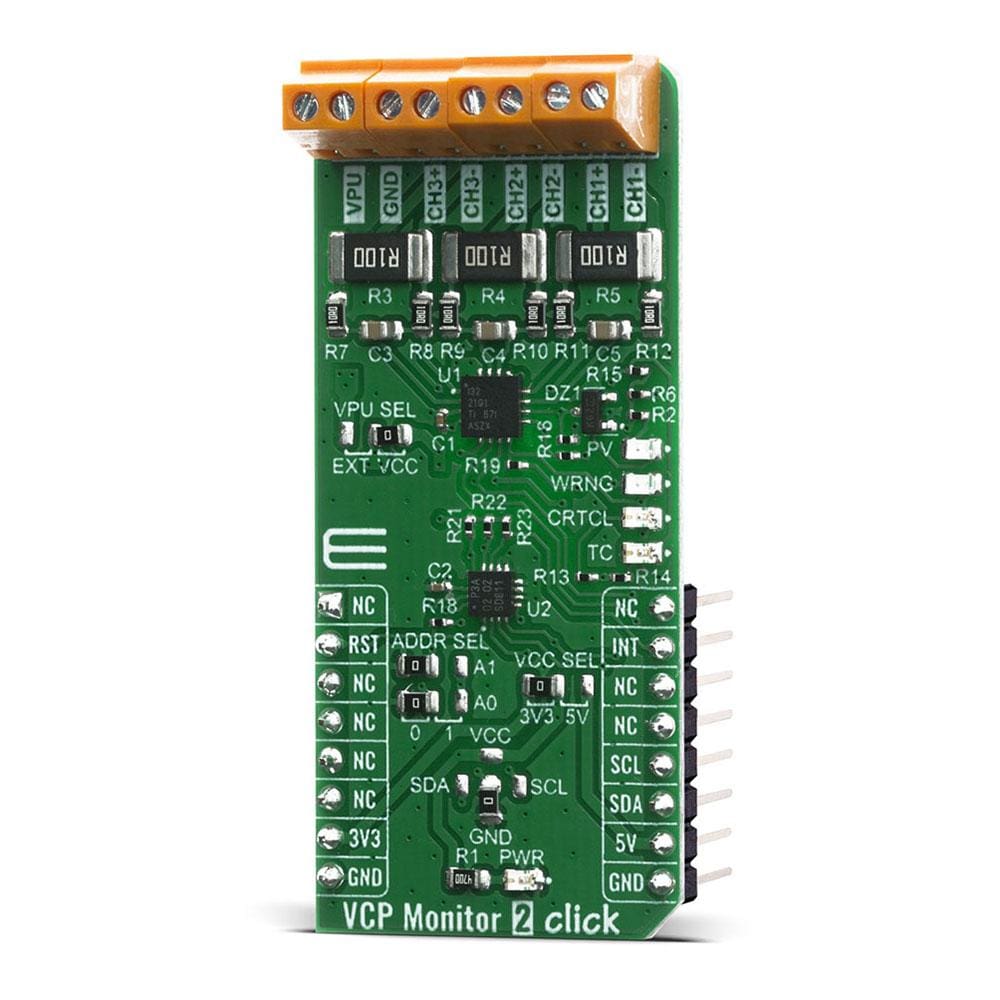
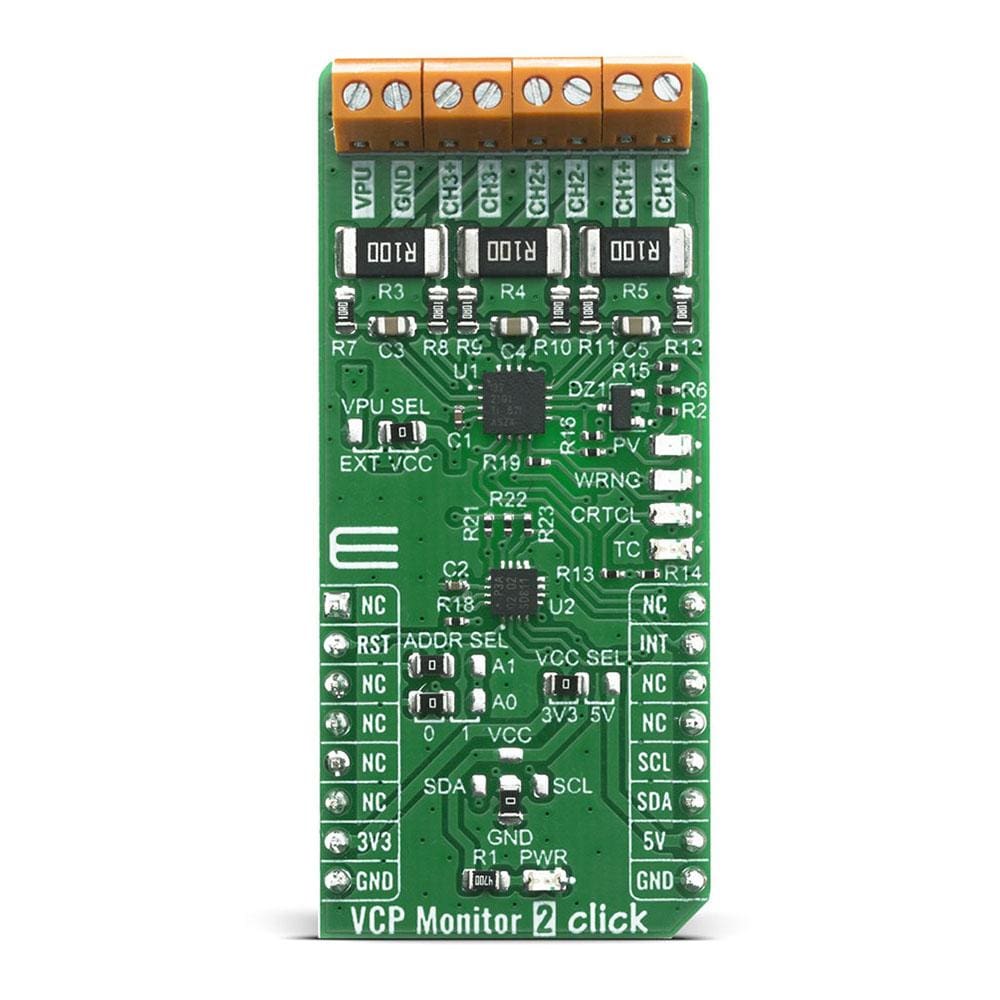
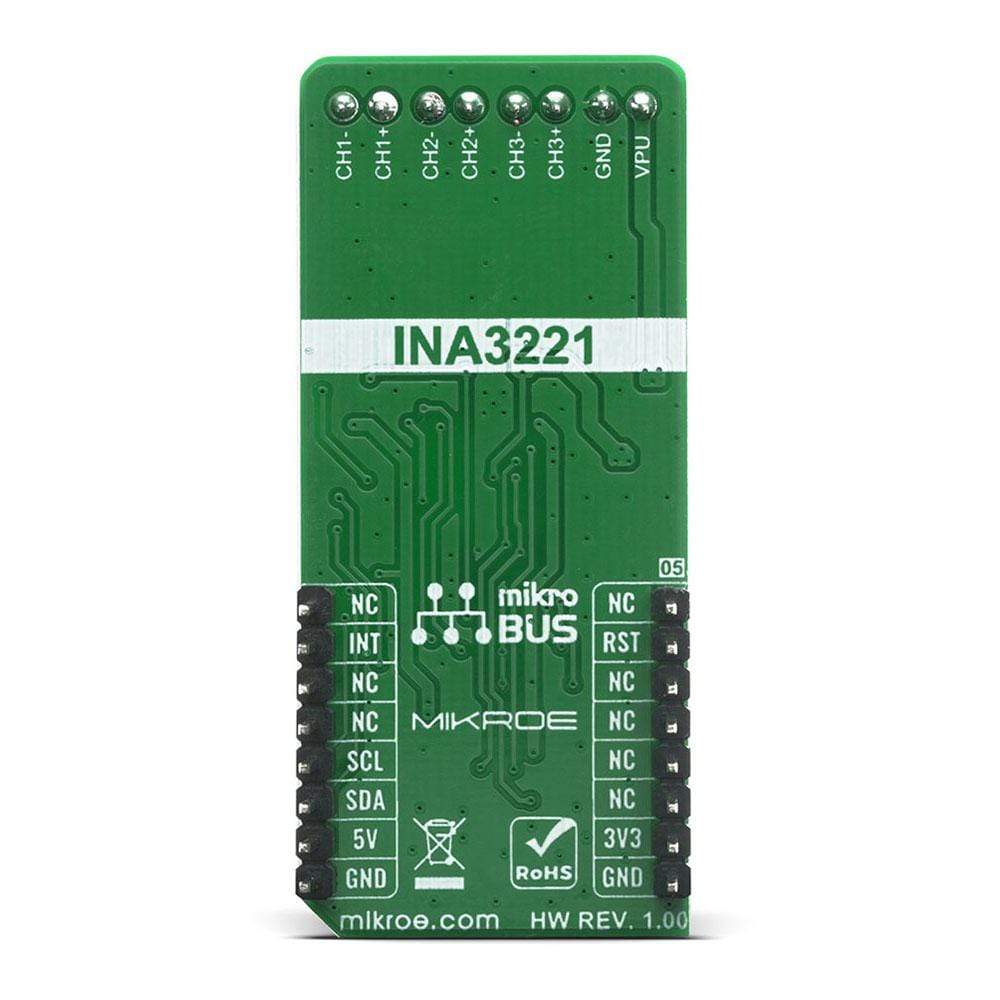
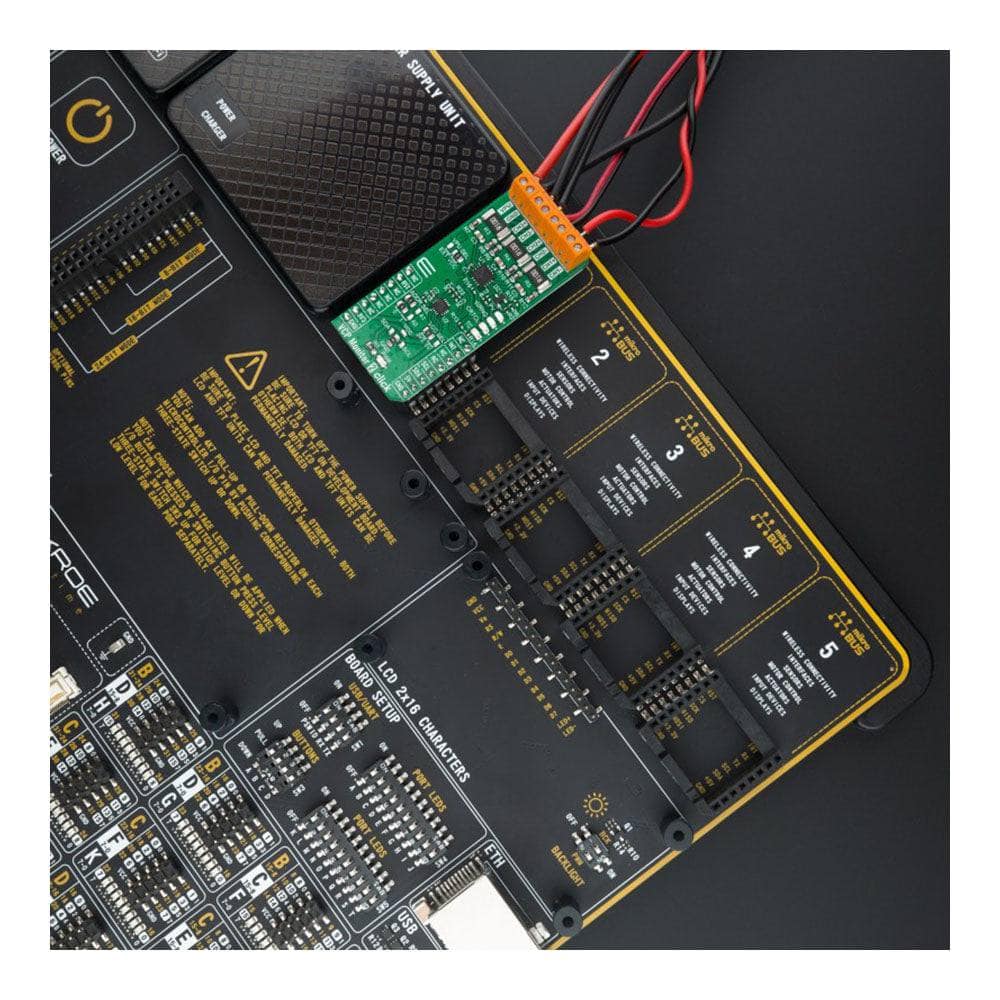
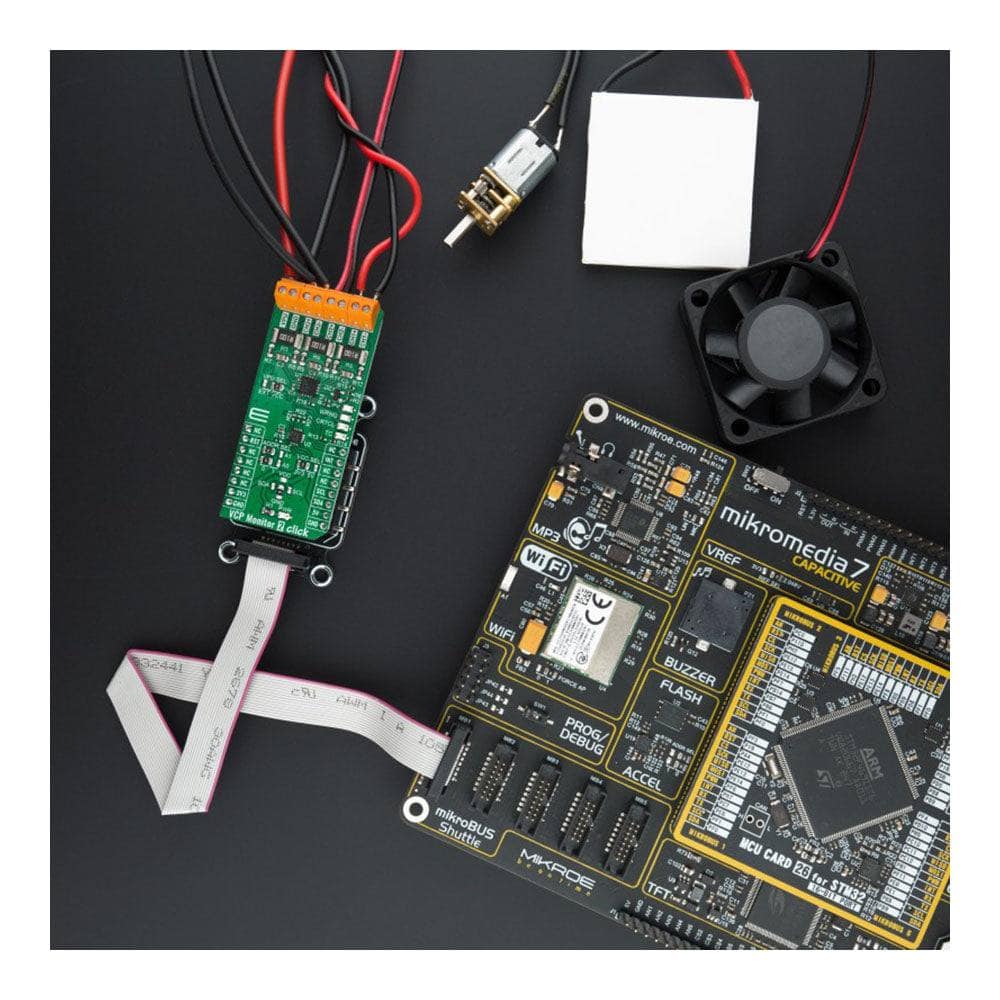
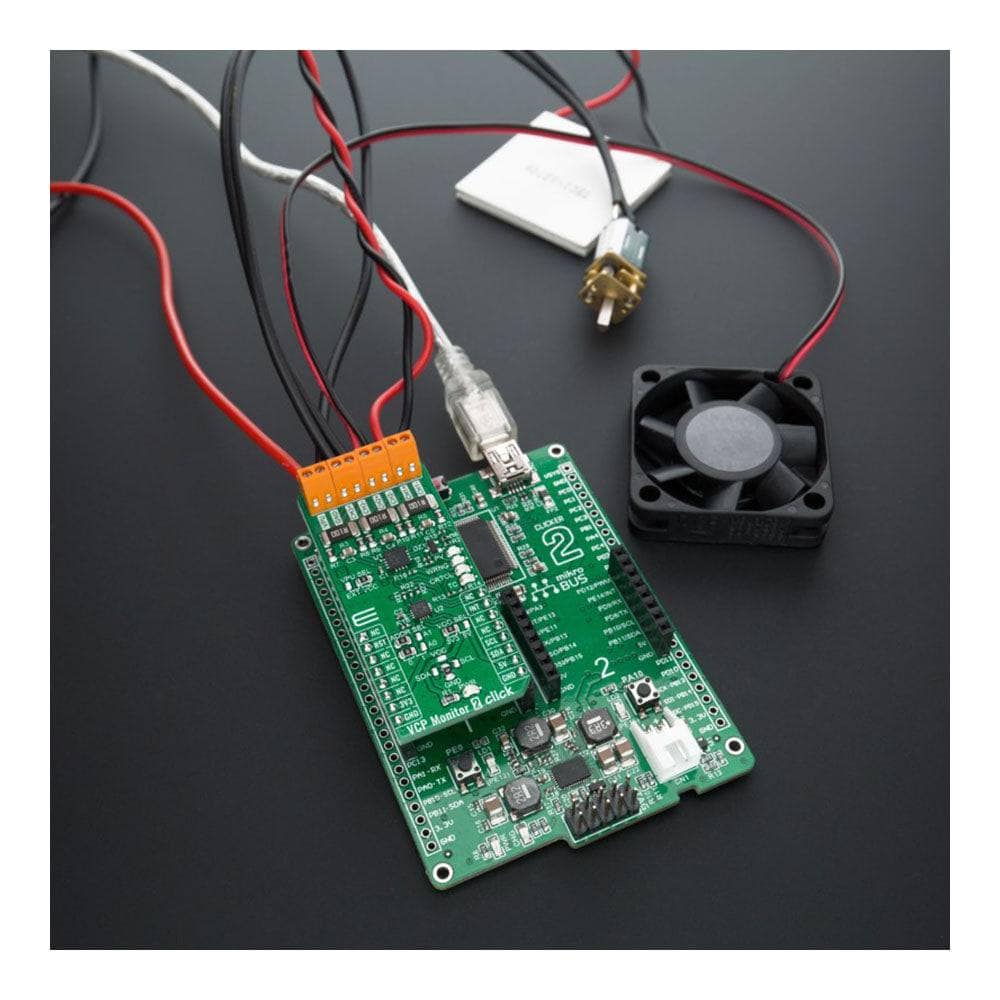
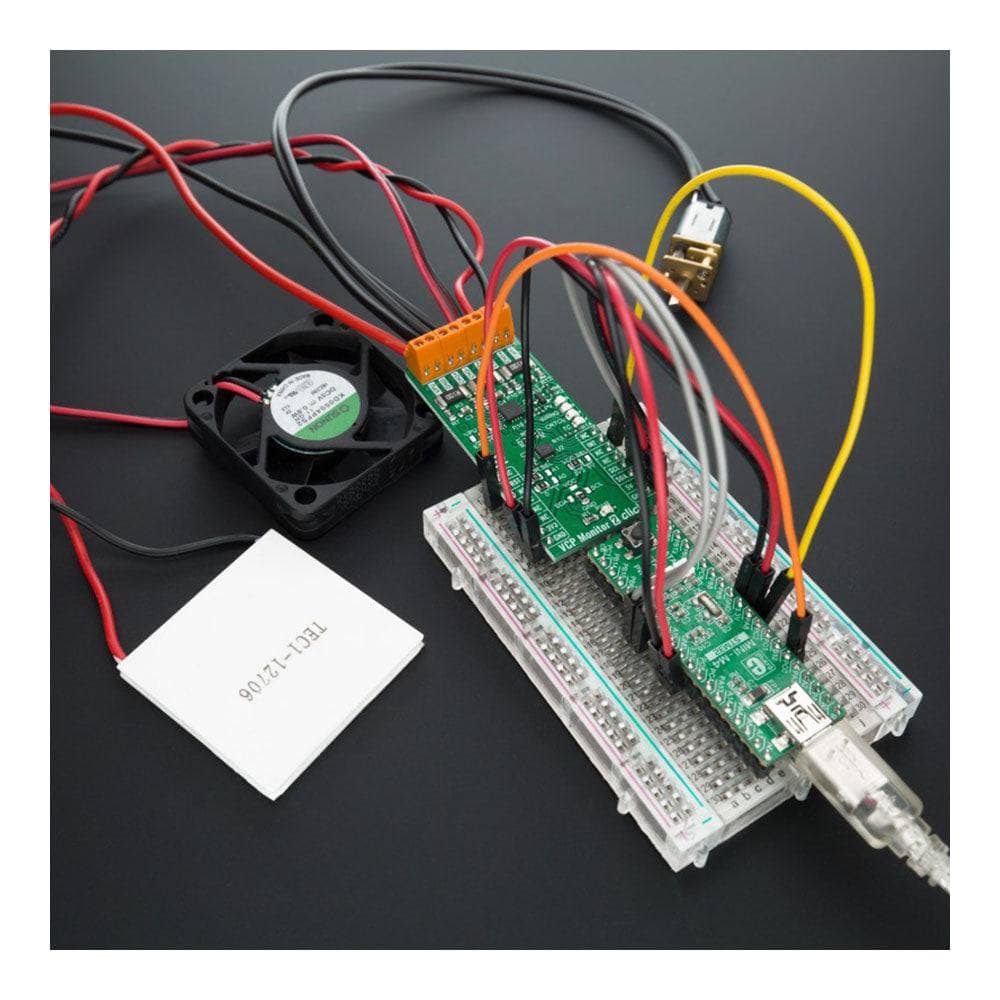
Overview
The VCP Monitor 2 Click Board™ is a three-channel, high-side current and bus voltage monitor with an alert indication function ensuring the intended application works within desired operating conditions. Featured chip INA3221-Q1, by Texas Instruments, monitors both shunt voltage drops and bus supply voltages, in addition to having programmable conversion times and averaging modes for these signals. The INA3221-Q1 offers both critical and warning alerts to detect multiple programmable out-of-range conditions for each channel. The INA3221-Q1 senses current on buses that can vary from 0V to 26V.
The device is powered from a single 2.7V to 5.5V supply and draws 350 μA (typical) of supply current. The I2C and SMBUS-compatible interface features four programmable addresses.
Downloads
Der VCP-Monitor 2 Click Board™ ist ein dreikanaliger High-Side-Strom- und Busspannungsmonitor mit einer Warnanzeigefunktion, die sicherstellt, dass die vorgesehene Anwendung innerhalb der gewünschten Betriebsbedingungen funktioniert. Der vorgestellte Chip INA3221-Q1 von Texas Instruments überwacht sowohl Shunt-Spannungsabfälle als auch Busversorgungsspannungen und verfügt darüber hinaus über programmierbare Konvertierungszeiten und Mittelungsmodi für diese Signale. Der INA3221-Q1 bietet sowohl kritische als auch Warnmeldungen, um mehrere programmierbare Bereichsüberschreitungen für jeden Kanal zu erkennen. Der INA3221-Q1 erfasst Strom auf Bussen, der zwischen 0 V und 26 V variieren kann.
Das Gerät wird über eine einzelne 2,7-V- bis 5,5-V-Versorgung mit Strom versorgt und verbraucht 350 μA (typisch). Die I2C- und SMBUS-kompatible Schnittstelle verfügt über vier programmierbare Adressen.
| General Information | |
|---|---|
Part Number (SKU) |
MIKROE-4126
|
Manufacturer |
|
| Physical and Mechanical | |
Weight |
0.023 kg
|
| Other | |
Country of Origin |
|
HS Code Customs Tariff code
|
|
EAN |
8606018717774
|
Warranty |
|
Frequently Asked Questions
Have a Question?
Be the first to ask a question about this.

